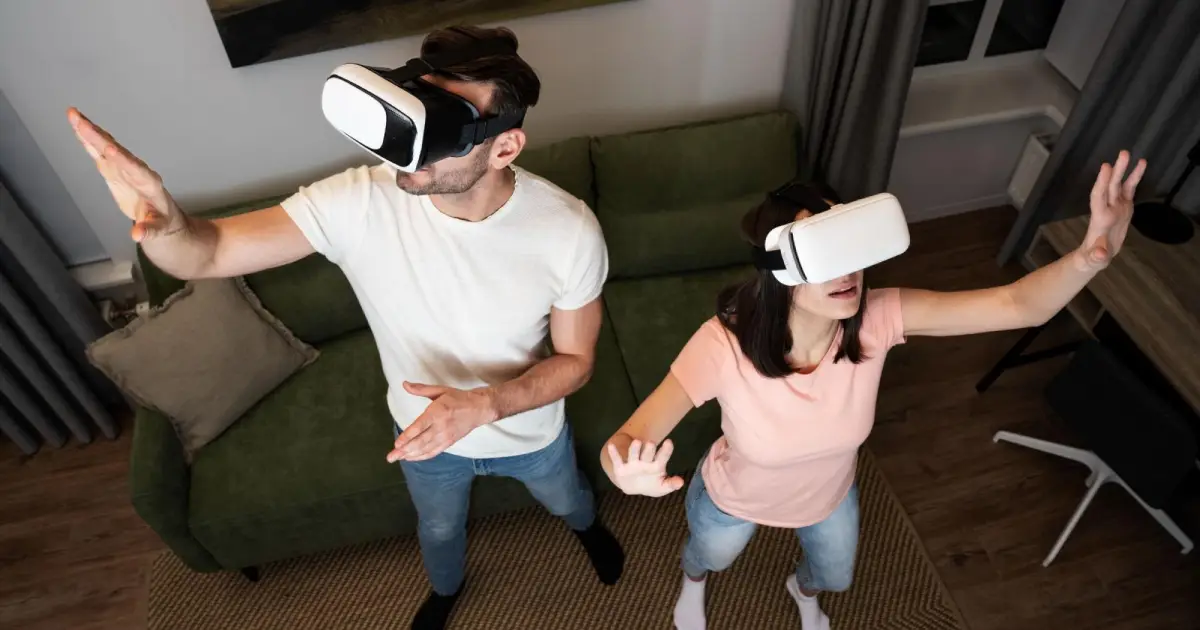
In the rapidly evolving world of home architecture and design, the integration of cutting-edge technologies has become crucial. One such technology that has revolutionised the industry is Virtual Reality Architecture. This article will delve into the significance of choosing Virtual Reality Architecture for your home. From enhanced visualisation to seamless collaboration with architects and interior designers, Virtual Reality (VR) offers a plethora of benefits that redefine the way homes are designed and built.
Virtual Reality Architecture is a technology that allows homeowners, architects, and interior designers to create and experience a digital replica of a home before construction or renovation begins. By using VR headsets and specialised software, users can immerse themselves in a realistic three-dimensional representation of their future home. This technology has gained popularity due to its ability to provide an interactive and engaging experience for all stakeholders involved in the home design process.
Virtual Reality Architecture experts empower homeowners to experiment with different design options and configurations. From rearranging furniture to trying out various colour schemes, VR allows for easy customisation without any physical alterations. This freedom to explore different possibilities helps homeowners find the perfect design that suits their preferences and lifestyle.
One of the key advantages of Virtual Reality Architecture is its ability to offer enhanced visualisation. Traditional architectural drawings and blueprints can be challenging for homeowners to interpret accurately. VR technology eliminates this barrier by transforming flat designs into immersive 3D environments. Homeowners can take virtual tours of their homes, enabling them to better understand the spatial layout, flow, and design aesthetics.
Effective communication between homeowners, architects, and interior designers is essential for the successful execution of any home design project. VR Architecture facilitates better communication by allowing all parties to visualise the same design elements simultaneously. This ensures that everyone is on the same page, reducing the risk of misunderstandings and potential errors.
Building or renovating a home is a significant investment, and any mistakes during the design phase can lead to costly revisions later on. VR Architecture minimizes the chances of design errors, saving both time and money. Homeowners can make informed decisions about materials, layouts, and finishes before construction begins, avoiding the need for expensive changes down the line.
Selecting the right Virtual Reality Architecture for your home is crucial to ensure a smooth and satisfactory experience. Here are some steps to help you make an informed decision:
Start by researching and shortlisting reputable companies that specialize in Virtual Reality Architecture. Look for providers with experience in residential projects and positive client reviews.
Review the portfolios and past projects of the shortlisted companies to assess their expertise and design style. Choose a company whose previous work aligns with your vision for your home.
Seek recommendations from friends, family, or colleagues who have experience with Virtual Reality Architecture. Their insights and feedback can be valuable in making your decision.
Ensure that the VR Architecture software and tools offered by the company are compatible with your devices. Additionally, opt for a user-friendly interface that allows for a seamless and enjoyable experience.
Virtual Reality extends its benefits beyond architectural design and can be a game-changer in the realm of home interior design.
Homeowners can explore virtual showrooms to select furniture, decor, and fixtures. This not only saves time but also provides an opportunity to visualise how each item will look in their home.
With Virtual Reality, homeowners can virtually place furniture in different positions and experiment with layouts before making final decisions.
Choosing the right colours and textures for walls, floors, and fabrics can be challenging. VR Architecture allows homeowners to preview and compare various options, making the selection process easier.
Virtual Reality can simulate different lighting conditions, helping homeowners determine the best lighting design for each room.
Virtual Reality Architecture promotes collaborative efforts between homeowners, architects, and interior designers. The shared virtual space allows for real-time discussions and feedback, ensuring that everyone's input is considered and incorporated into the final design.
Incorporating sustainability into home design has become a priority for many homeowners. Virtual Reality can aid in sustainable design by enabling virtual energy simulations and eco-friendly material selections.
As technology continues to advance, Virtual Reality Architecture is expected to become even more sophisticated and accessible. The future holds the promise of even greater convenience, realism, and innovation in the field of home architecture and design.
Choosing Virtual Reality Architecture for your home design journey offers numerous benefits. From a more immersive visualisation experience to better communication with architects and interior designers, VR Architecture streamlines the entire process, resulting in a home that perfectly aligns with your vision and needs.
No, Virtual Reality Architecture can be applied to projects of various sizes, from small renovations to large custom-built homes.
While Virtual Reality provides a highly realistic representation, minor variations may occur during the construction process.
Yes, you'll need a VR headset compatible with the software used by the Virtual Reality Architecture company.
Yes, Virtual Reality can simulate energy consumption and help homeowners make more sustainable choices.
Yes, investing in Virtual Reality Architecture can save costs by minimising design errors and changes during construction.